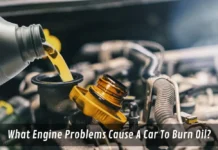Buying a used car can be a smart and cost-effective decision, but only if you know how to evaluate it properly before making a purchase. A test drive is the most crucial step in assessing a vehicle’s performance, comfort, and hidden issues that may not be visible at first glance. From checking the engine response and braking efficiency to spotting red flags like unusual noises and alignment problems, knowing what to look for can save you from costly mistakes.
1. Research Before You Roll

Dig into the car’s make, model, and year say it’s a 2020 Honda Civic or a 2018 Ford Escape. Check online forums, owner reviews, and sites like Carfax for common issues rusty Civics, anyone?. Look up its market value on Kelley Blue Book or local listings to know if the seller’s price is fair ₹8 lakh might be a steal or a rip-off depending on mileage and condition. Also the VIN (Vehicle Identification Number) from the seller and run a history report. Accidents, flood damage, or a sketchy title can tank a deal. I once dodged a great SUV because the report showed it’d been totaled twice yikes! Knowledge is power here, so arm yourself with facts.
Pro Tip: Screenshot forum posts about model-specific quirks Civic CVT lag and bring them along great ammo for negotiations.
2. Set Up the Test Drive Right

Don’t just show up set the stage. Call or message the seller to schedule a daytime slot good light’s key for spotting flaws. Ask to drive for at least 20-30 minutes on varied roads city, highway, bumpy lanes, not just a quick loop. Bring a friend for a second opinion they might catch what you miss and wear comfy shoes since you’ll be poking around. If it’s a private sale, meet in a public spot like a mall parking lot for safety. Dealership? Confirm they’ve got the car ready, not in the shop. I once arrived to test a car that just sold total time-waster. right and you’ll maximize your shot at a thorough check.
Pro Tip: Bring a small notepad or use your phone’s voice memo to jot down first impressions memory fades fast.
3. Inspect the Exterior Like a Detective
Channel your inner Sherlock and scan the outside. Walk around the car, crouching low to catch dents, scratches, or mismatched paint signs of past crashes or cheap fixes. Check for rust along wheel wells, doors, and under bumpers a little surface rust is okay, but bubbling metal screams trouble. Tires should have even tread uneven wear hints at alignment woes. Look at panel gaps are they tight and uniform? Wonky gaps mean bodywork’s been done, maybe badly. Test the doors, hood, and trunk stiff hinges or creaks could signal neglect. I once found a perfect car with a trunk that wouldn’t latch deal breaker.
Pro Tip: Snap pics of any flaws with your phone handy for negotiating or showing a mechanic later.
4. Check the Interior for Comfort and Clues
Slide inside and get nosy. Sit in the driver’s seat does it feel right for your height and posture? Adjust the seat, mirrors, and wheel to your liking if they’re stiff or stuck, that’s a flag. Sniff around musty smells mean leaks or mold, while heavy air freshener might mask smoke or pet odors. Check the upholstery for tears, stains, or burn marks small wear’s fine, but trashed seats suggest rough use. Push every button windows, locks, AC and flip switches do they click smoothly? Look at the odometer 50,000 km on a 2022 model’s believable 200,000 km raises eyebrows. I once skipped a car because the seatbelt wouldn’t retract safety’s non-negotiable.
Pro Tip: Bring a flashlight to peek under seats loose change or junk can hint at the owner’s care level.
5. Pop the Hood with Purpose

Don’t be shy lift that hood! You don’t need to be a mechanic, just observant. Look for oil leaks dark spots, cracked belts, or corrosion on battery terminals green fuzz is a bad sign. Check fluid levels oil, coolant, brake low or dirty means neglect. The engine should be clean-ish, not caked in grime. Spot any DIY fixes? I once saw a radiator hose held by a clamp and walked away too risky. If you’re clueless, watch YouTube for a 5-minute used car engine check crash course before you go.
Pro Tip: Smell the oil dipstick burnt or funky odors mean engine trouble brewing.
6. Start It Up and Listen
Turn the key or push the button and tune in. The engine should fire up smoothly no coughing, grinding, or delays. Idle should be steady, not bouncing like a jittery kid. Rev it lightly hear clunks or rattles? That’s bad news. Exhaust smoke’s a clue blue means oil burning, white could be coolant, black is fuel issues. Let it run a few minutes does it overheat or smell hot? I dodged a bargain once when the idle sounded like a dying lawnmower.
Pro Tip: Record the startup sound on your phone play it for a mechanic friend if you’re unsure.
7. Drive Different Roads

The settle for a parking lot spin hit city streets, a highway stretch, and a bumpy road if you can. In traffic, how it accelerates and shifts jerky or sluggish is a no-go. On the highway, push to 80-100 kmph legally does it hum or wobble? Rough roads test suspension creaks or bangs mean worn parts. Mimic your daily grind stop-and-go, turns, hills. I once loved a car until a pothole ride revealed a suspension so shot it felt like a trampoline. Variety shows the car’s true colors.
Pro Tip: Turn off the radio silence lets you hear every squeak or groan the car’s hiding.
8. Test the Brakes and Steering
Safety’s king, so hammer this hard. Brake gently, then firmly do they grab smoothly or feel spongy? Any squealing or pulling to one side? Test in a safe spot at low speed push hard to mimic an emergency stop. Steering should be tight, not loose or vague turn sharp and feel for play or vibes in the wheel. I once passed on a car because the brakes pulsed like a bad dance beat warped rotors, big fix. These are deal breakers if they’re off, so don’t skip this step.
Pro Tip: Try a U-turn tight steering response tells you how it’ll handle parking or quick dodges.
9. Play with the Features
Time to fiddle Test every gadget AC cold or bust, heater, wipers, lights (high/low), horn, infotainment. Roll windows up and down slow or stuck means motor issues. If it’s got cruise control or parking sensors. A dead feature’s a repair bill waiting to happen. I skipped a car once because the AC blew warm air fixing that in summer? Even small stuff like a busted lighter socket can add, poke around.
Pro Tip: Plug in your phone charger working USB/power points are a bonus for daily use.
10. Post-Drive Review and Negotiate

Park it, take a breath, and debrief. How’d it feel solid or shaky? List what you loved smooth ride and hated weird noise. Ask the seller about maintenance history receipts are gold, excuses are red flags. If you spotted issues rust, odd sounds, get a mechanic’s check before committing ₹2,000 now beats ₹20,000 later. Negotiate smart use flaws as leverage. Love the car, but that brake squeal’s a ₹5,000 fix can you knock off ₹10,000? Worked for me once Walk away if it’s not right there’s always another ride.
Pro Tip: This keeps things transparent and helps your mechanic quickly verify the car’s history.
Conclusion
A test drive is your best opportunity to evaluate a used car before committing to a purchase. and you can assess the vehicle’s condition, performance, and comfort like an expert. Pay attention to how it drives, listen for unusual sounds, and inspect key features inside and out. Don’t rush take your time to ensure the car meets your expectations.








